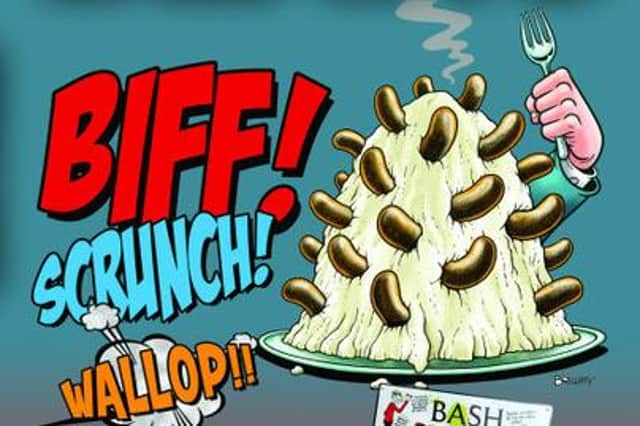Book review: The Unofficial History of the Beano, by Iain McLaughlin


The Beano isn’t what it used to be. And that’s a good thing, as Iain McLaughlin explains in this look at eight decades of Britain’s longest-running comic.
It’s a good thing because a children’s comic that’s set in stone is as relevant as a cave painting. DC Thomson’s humour weekly wouldn’t still be with us today if the doughty men – and eventually women – behind the gags didn’t reflect their readership.
Advertisement
Hide AdIt was a lesson learned with time. Yes, the comic was hugely popular from its debut in July 1938, a companion to the recently departed Dandy. But the early years starred the likes of Big Eggo, an ostrich with the habit of losing its eggs, and Tin-Can Tommy, created by an inventor to replace his dead son…
The place to find working class kids like those buying the comic was Lord Snooty, the brainchild of Broons and Oor Wullie legend Dudley D Watkins. "Lord Marmaduke of Bunkerton” had the lolly, but lacked laughs until he invited the Gas-Works Gang into his castle to play. Children climbing out of the Depression relished the sight of ordinary kids swinging from chandeliers or enjoying a slap-up meal.
The war years saw The Beano published fortnightly, alternating with The Dandy, due to paper shortages – keeping up children’s morale was recognised as vital. And if that meant Pansy Potter the Strong Man’s Daughter could destroy a U-boat full of Nazis, while a prose story mocked Lord Haw-Haw, all the better.
The Fifties brought The Beano’s most famous son, Dennis the Menace, “the world’s wildest boy”. Readers took to this scowling little lad immediately. He was a far cry from the fantasy folk of the comic’s early years, living in a recognisably modern world. And while he was a very naughty boy, prevailing morality meant stories would end with a spanking from his long-suffering Dad. Readers loved him. Dennis was soon joined by similar scallywag Minnie the Minx, along with the more cerebral Roger the Dodger and the cheeky Bash Street Kids, all of whom appear to this day.
Behind the scenes, The Beano staff were a family, with everyone encouraged to contribute jokes and ideas – tea lady Olive even became the Bash Street dinner lady. Editors, writers and artists would come and go, but new talent was always encouraged, refreshing the stalwart strips and sparking new characters. As time passed the “Big Four” of Dennis, Minnie, Roger and the collective Bash Street Kids were joined by the likes of Billy Whizz, Little Plum, The Three Bears and many, many more.
While prose stories had vanished in the Fifties – too much of a slog for most readers – adventure strips had continued with the likes of Q-Bikes and Billy the Cat, but in 1975 General Jumbo ended, and no more adventure strips appeared for 35 years. It was clear that humour strips were The Beano’s brand.
Advertisement
Hide AdA 1982 ruling in the Court of Human Rights banned corporal punishment in state schools, but The Beano had been phasing out whackings and thrashings since the mid-Seventies. Writers were happy to get more creative with their story endings.
The Beano has continued adapting to the times – today the characters aren’t all white, they’re not all able-bodied… they’re Britain’s kids in a far funnier world. And that’s why sales have been going up in recent years, says McLaughlin, a writer with the comic since the Seventies.
Advertisement
Hide AdAs well as the history of the paper, there are short profiles of key contributors, photographs of the Dundee offices and creatives, and a fascinating timeline of changes within the pages.
The serious lack with this book is images from the comic itself. Yes, you know Dennis and Minnie, you may remember Ball Boy and Baby-Face Finlayson, but wouldn’t it be good to get a look at Tin-Pot Tommy, Billy the Cat or The Germs? I suppose that’s “Unofficial” for you, but it’s a massive shame.
Nevertheless, McLaughlin gives us a cracking look at a British institution that’s bound to bring back good memories for anyone reading. No spanking required.
The Unofficial History of the Beano, by Iain McLaughlin, Pen & Sword Books, 200pp, £19.99
A message from the Editor
Thank you for reading this article. We're more reliant on your support than ever as the shift in consumer habits brought about by coronavirus impacts our advertisers.
If you haven't already, please consider supporting our trusted, fact-checked journalism by taking out a digital subscription at https://www.scotsman.com/subscriptions